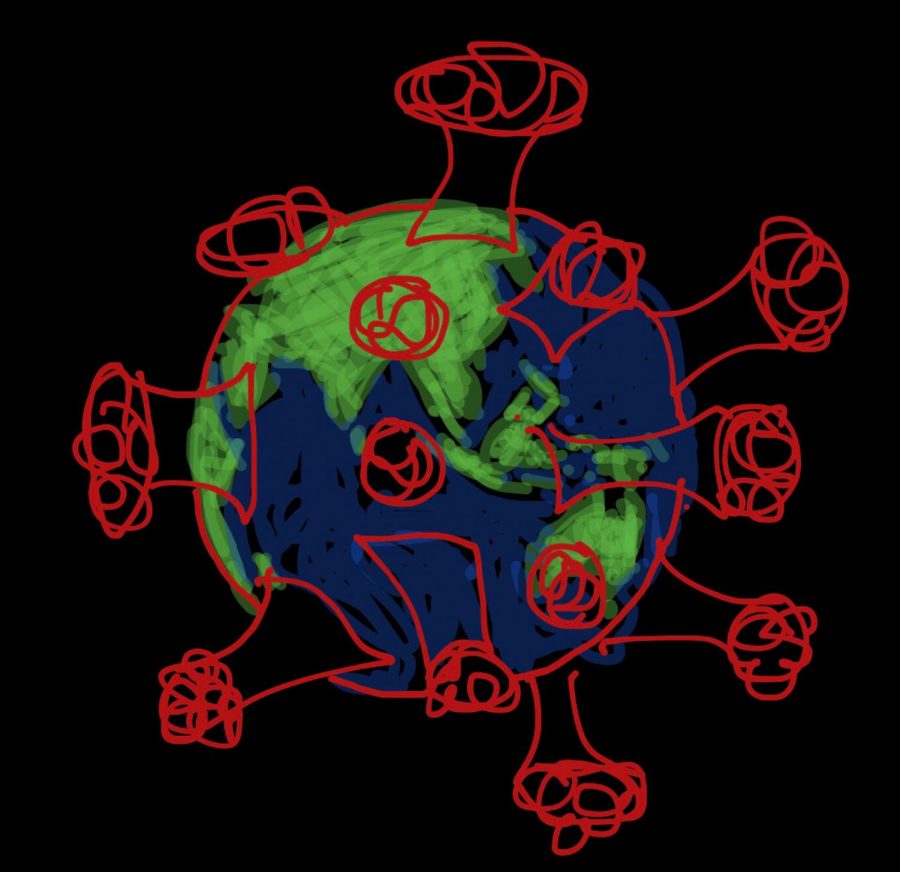What is COVID like aorund the world?
How have people experienced COVID-19 around the world?
While COVID- 19 affects the whole world differently, it is important to remember there is no limit to the virus.
COIIn the United States of America, many citizens are able to cope with the past shutdowns or current restrictions only because of granted resources like electricity, financial security, private transportation, and a host of infrastructures already in place.
In particular, the issue of providing food for one’s family is increasingly foremost in people’s minds. Most citizens of developing countries were already living hand to mouth, but COVID-19 has further limited the options of readily available, healthy meals. For instance, the fishing sector has been greatly impacted by nationwide lockdowns in various coastal countries. As a result, not only have many livelihoods been put on hold, but seafood is now also noticeably absent in many open-air markets.
To make matters worse, many villagers in certain parts of the world lack the capacity in iceboxes or five-foot-fridges to store provisions for longer than a few days at a time. Even if their governments impose a stay-at-home order to curb COVID-19 transmission, citizens are prevented from adequately stocking up on food in preparation for a country-wide quarantine.
Here in Missouri, St. Louis Country has only been put under stay-at-home order once before, in March. Residents were prohibited from frequenting movie theatres, music concerts, retail stores, restaurants, and other nonessential businesses. However, hospitals and grocery stores remained as a key link between consumers and [producers].
In certain governments though, draconian measures are regularly imposed and enforced as often as there are spikes in the infection, (which is not to say that they are altogether ineffective). Every business is halted, including drugstores and supermarkets.
For those who know where to look, though, there are still some ways to obtain daily provisions, which is the situation most find themselves in. When public transportation is put at a standstill, citizens may still walk as far as their legs can carry them. Since the range of a person’s travels is severely limited without motorized vehicles, authorities permit the occasional pedestrian during lockdown orders. Then, if there is a small store nearby, the owners will open the back door to customers standing in the alley or out of the street view.
Granted, the whole convoluted process is by no means an ideal situation, but perhaps if Missouri issues another stay-at-home order for St. Louis County, we can all look to model the same ingenuity and resourcefulness of our neighbours overseas.
One of my uncles, a Sri Lankan, experienced firsthand the unique challenges brought about by the pandemic beyond our borders. Once during a virus-related lockdown in the area, he was notified by the local butcher of a recently slaughtered cow. Since meat has been growing scarce of late and it was offered at a reasonable price, my uncle took time out of his work schedule to walk the two miles to the shop.
After arriving, though, he realized it would only be feasible to buy around ten pounds. The issue was not over how much he could carry, nor did it have to do with whether he and his family preferred a certain cut of meat. Instead, Uncle Pieris’s hands were tied because of the amount of space allocated for meat at home. If not possible to freeze right away, cuts for meat always have to be seasoned, portioned, and cooked over the stove, all of which takes a great deal of time.
While most jobs are suspended by concerns over the coronavirus, the cost of living has not changed. Even those who manage to retain their positions are sometimes forced to forfeit as transportation to and fro workplaces have become even more difficult. Of course, this is not a problem we usually encounter in our neighbourhoods because most people at least own one car.
Yet, particularly for residents living within or on the outskirts of a large city, public transportation is the cheapest, most convenient way of getting from one place to another. Before the virus, it was not uncommon to see public buses crammed to the maximum capacity (or perhaps over and above) in such regions. Every time there would be at least some men who would cram onto the tailgate or jump in at the last second.
Now, though, buses must only allow a certain number of passengers. Occupants must wear masks and sit every few rows, with empty space in between. Compared to the previous system in which every spare inch of space was exploited to the fullest, one can imagine the drop in revenue. The new system cannot even begin to accommodate everyone, leaving many who were previously dependent on the buses high and dry. And that is only one aspect of transportation.
Many of the issues facing people around the world are compounded by the coronavirus, leaving many frustrated in their efforts to provide for a family. For instance, the scarcity of healthy food is exacerbated by raised prices from far-away stores, which in turn only accept cash.
In Western countries, most stores, however small, at least have a single credit card reader at check-out counters; however, in less developed regions boutiques or corner stores lack the technology. Accordingly, patrons are obligated to pay for purchases in physical currency. However, without banks to cash checks during lockdowns, withdrawal of funds is no longer so simple.
Roughly two-thirds of the world currently engage in paper money, bills, and banknotes. The very real probability of COVID-19 transmission from hand-to-hand transactions is being addressed as best as it can: with designated times of isolation for the cash plus hand washing before and after. However, situations can easily go awry, such as in the event that water is scarce or income must be put to use immediately.




